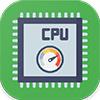 Geekbench 3, 64bit (Multi-Core)
Geekbench 3, 64bit (Multi-Core)
|
|
Intel Core m5-6Y57
2C 4T @ 1.1 GHz
|
4864
|
|
|
AMD E2-2000
2C 2T @ 1.75 GHz
|
1210
|
 Geekbench 3, 64bit (Single-Core)
Geekbench 3, 64bit (Single-Core)
|
|
Intel Core m5-6Y57
2C 4T @ 1.1 GHz
|
2906
|
|
|
AMD E2-2000
2C 2T @ 1.75 GHz
|
668
|
 Estimated results for PassMark CPU Mark
Estimated results for PassMark CPU Mark
|
|
Intel Core m5-6Y57
2C 4T @ 1.1 GHz
|
2353
|
|
|
AMD E2-2000
2C 2T @ 1.75 GHz
|
828
|
 Geekbench 5, 64bit (Multi-Core)
Geekbench 5, 64bit (Multi-Core)
|
|
Intel Core m5-6Y57
2C 4T @ 1.1 GHz
|
1195
|
|
|
AMD E2-2000
2C 2T @ 1.75 GHz
|
273
|
 Geekbench 5, 64bit (Single-Core)
Geekbench 5, 64bit (Single-Core)
|
|
Intel Core m5-6Y57
2C 4T @ 1.1 GHz
|
644
|
|
|
AMD E2-2000
2C 2T @ 1.75 GHz
|
143
|
 Cinebench R11.5, 64bit (iGPU, OpenGL)
Cinebench R11.5, 64bit (iGPU, OpenGL)
|
|
Intel Core m5-6Y57
2C 4T @ 1.1 GHz
|
16.7
|
|
|
AMD E2-2000
2C 2T @ 1.75 GHz
|
8.8
|
 Cinebench R11.5, 64bit (Multi-Core)
Cinebench R11.5, 64bit (Multi-Core)
|
|
Intel Core m5-6Y57
2C 4T @ 1.1 GHz
|
2.5
|
|
|
AMD E2-2000
2C 2T @ 1.75 GHz
|
0.7
|

